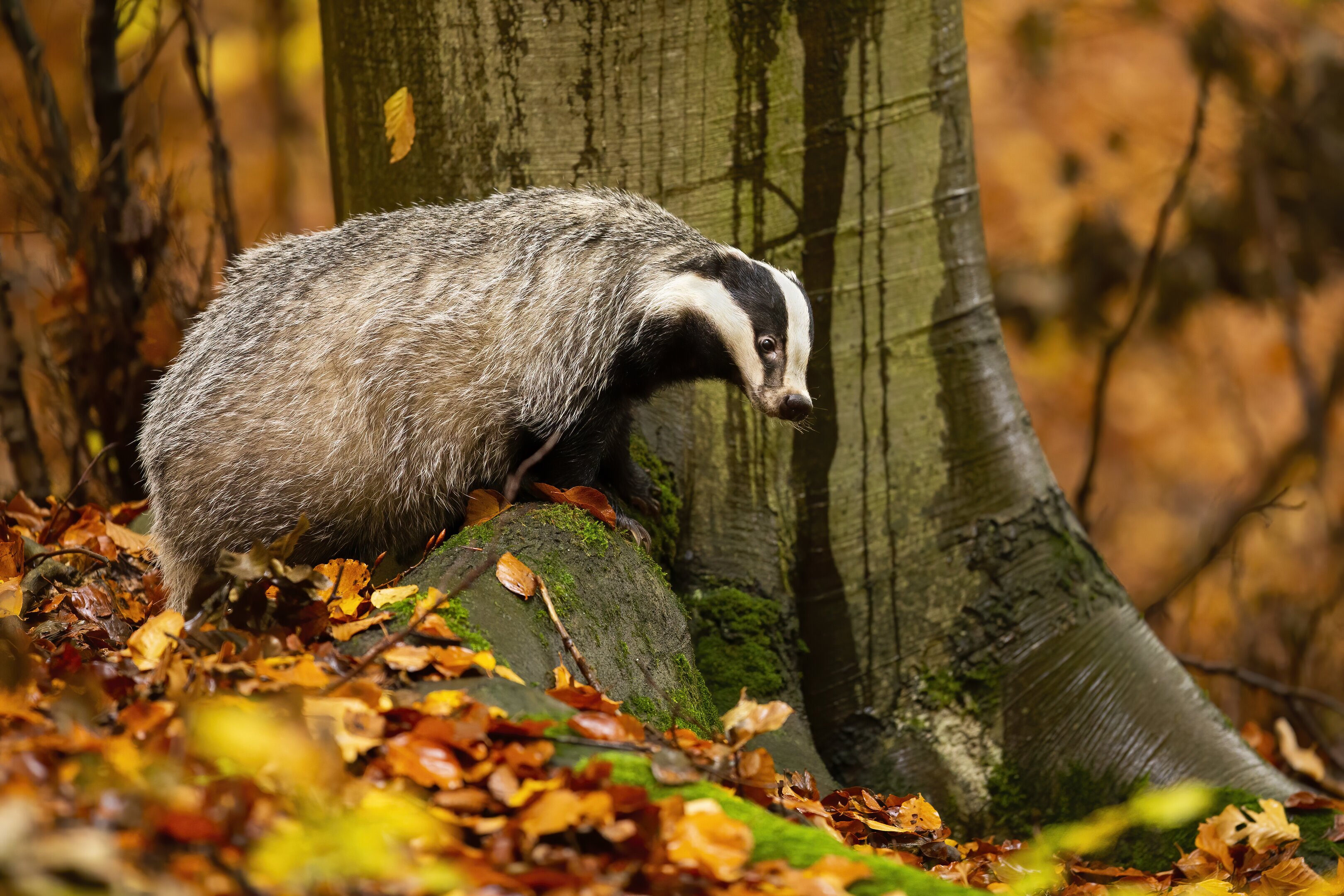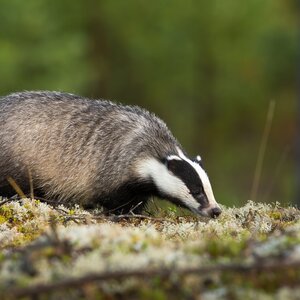
Hunts

Badger hunting
The hunting of badgers takes place in areas where they search for food to increase their fat reserves before hibernation.
In autumn, the fur of badgers is beautifully colored, adding to the beauty of the hunting experience.
Luring
Badgers can be lured using a decoy that imitates injured prey.
Successful luring requires knowledge of the right places for baiting and the animals' resting spots during the mating season. It involves understanding cover, wind patterns, animal behavior, and most importantly, the ability to perfectly mimic animal calls.
Hunting period
September 1st - November 30th
Biology
Badgers inhabit deciduous or mixed forests, where they prefer forest edges, groves with underbrush near pastures and fields. They often settle in orchards and parks with shrubby undergrowth.
Their diet is varied, with earthworms being a staple. They also consume insects, snails, frogs, mice, voles, hedgehogs, and ground-nesting birds. Badgers enjoy digging up ground wasps and hornets and won't pass up carrion. In terms of plant-based food, they eat plant roots, forest fruits, acorns, beech mast, and mushrooms. In fields, they feast on potatoes, corn, and clover.
.jpg?locale=en)



.jpeg?locale=en)


.jpg?locale=en)